Is secular art capable of talking about God, or is this the prerogative of church art only? When and why does an artist start to support evil? Is there a chasm between secular and church art, or can they interact with each other? Are modern technologies and styles permissible in the Church? Are all forms of Christian culture alive today, or have some of them, for example, Church Slavonic, become desperately obsolete? We are going to talk about all these subjects with Archpriest Leonid Kalinin, Rector of the Moscow Church of St. Clement, the Pope of Rome and a member of the Union of Russian Artists.
—We recognize that the purpose of art is the service of God. But sometimes art promotes sin. Where is the limit that art oversteps and starts serving evil, forgetting its divine origins?
—Let us take into account that there is no sin in the Church, but there is sin against Church. The Church as the Body of Christ is sinless; that is why art that is closely connected with liturgics, with the spiritual, divine sphere, must not bear any sin. But when there is a deviation, when art begins to seek the vainglory of this human world or of itself rather than the glory of God, then sin begins. And the sin becomes evident. Then art itself changes, its purity and simplicity are gradually replaced with attempts to glorify the author, the man, instead of the Creator. Sin increases proportionally to people’s renunciation of God. And to the contrary: as people return to God, sin disappears.
—But it is considered that many great secular painters, like Vincent Van Gogh, sought God as well. The latter was a missionary; he preached and even wanted to become a pastor.
—It is as Protestantism seeks God. First Protestants lost almost everything, including the Church, and found themselves amid the raging sea of mundane life with the wreckage of their ship. And after that they started rowing towards the ship of true salvation and trying to get aboard again. But in many cases all these attempts are in vain. We need to understand the most important thing: if a person converts to Orthodoxy and returns to the Church, then it means he returns to the ship of salvation and his artistic work transforms completely. There are plenty of examples among painters, composers and other cultural figures. The famous Russian sculptor Vyacheslav Mikhailovich Klykov (1939-2006) was at first an absolutely secular man; he fashioned stone figures of women, repeated archaic images. But when he became Orthodox, his artistic work changed radically—he began to praise the Lord and the people who served Him, and an excellent portrait gallery as well as fine monuments and memorials were created. And one of the first Klykov’s projects in this new stage of his creative activity was the monument to St. Sergius of Radonezh, installed at the saint’s birthplace. We see the figure of a spiritual elder surrounding a youth; although it could also be described as a youth against the background of an elder. This was probably the first attempt in the history of the Soviet-era sculptural art to show someone’s spiritual path. It is an illustrative example of a painter’s return to the Church. So, had Van Gogh returned to Orthodoxy, his paintings would have changed very appreciably.
—In other words, Van Gogh’s “The Potato Eaters” would have included icons behind the subjects had he become Orthodox?
—Yes, possibly. At the very least, there would have been signs of the presence of Divine grace, the presence of God among those depicted on the canvas. Signs are always very informative. And it is not without reason that a menorah, a symbol from Judaism, is present on the logos of many companies. By the way, you will see many curious signs on logos of many Russian companies. If an icon hangs in your house and it is an object of your religious veneration, it is a sign to your guests that religious people live here and they are expected to treat your family and behave in your house accordingly.
—What do you think of the modern authors who express their views manifestly?
—I view painters as preachers. Some preach heresy, others preach God. So my perception of these authors is strictly oriented. I would never praise a theomachist painter because I hold that he uses his God-given talent against his Creator. That is quite a deplorable spectacle.
In art there was a movement called impressionism. It derived its name from the word, “impression”. These artists tried to distance themselves from any ideology like religion, atheism, or any political views. They simply expressed the beauty of this world, shared with people their impressions of it. Such works of art are very beautiful, yet they are very irresponsible, because they bear no message that would draw man to God. This is on the one hand. But, on the other hand, beauty in art always means glorification of the Almighty, because God is the source of all that is beautiful. Thus, at a stretch, I can accept the work of impressionists, especially those who strove to accept the beauty of the world created by God. For example, Claude Monet was an excellent landscape painter. Let us recall his paintings of Rouen Cathedral sunlit at different times of the day. He reproduced the varying effect of colors and light so beautifully—the beauty of the Lord’s world and the creation of human hands. Semantically, this is akin to divine worship.
—Why have these wonderful churches in the West today been converted into golf clubs, service stations and car washes?
—Because their economy is built this way. The God of the West is the dollar, the euro—in a word, money. Many people there have forgotten about God and about their responsibility to Him. When this happens, church buildings are longer more regarded as holy. They are “emasculated” and stand empty. This process started long ago. Let me tell you one story. Early in the 2000s I visited the town of Delft in the Netherlands in order to see pictures of my favorite Dutch painter Johannes Vermeer (1632-1675). He lived in that town and worked in his shop. He created around forty paintings. His paintings made him immortal. He too was a kind of impressionist, but of the seventeenth century. In his paintings he shared his impression of the wonderful beauty of the world, the colors of this world. The church where he is buried has no altar. And now this church is unused. I asked its keepers why the church was unused and they answered, “It has been closed since the seventeenth century! It was closed right after Vermeer’s death.” “Why?” I asked. “Because we don’t need a church,” they said. The Dutch who are well-fed and lack nothing do not need God. This is just what they said. Whenever people begin to regard well-being as the most important thing if life, God automatically becomes “unnecessary”.
In the Orthodox tradition, the situation is very different. Many of our wealthiest compatriots were famous donors and patrons of churches and art. They sought to glorify the Name of God, not their own or someone else’s names. This phenomenon of the Russian patronage of arts is noteworthy. Tretyakov, Bakhrushin… They established museums, collected high-quality works of art that elevate one’s spirit. Art is capable of spiritualizing people. That was their (the artists’) primary task and thus they immortalized their names. He who glorifies God becomes immortal.
—There is a point of view that church art and traditional art are opposed to modern art. Is this true; and if so, why?
I would like to correct your question: modern art opposes church art today, and not vice versa. This is like a battle between good and evil. God is not fighting with the devil, but the devil is fighting with God. This is the matter. But, since there is no dualism in the world, and the forces are unequal, all the devil’s attempts to resist God are meaningless. Likewise, all the efforts of modern art to resist the Church are futile. The Church is eternal, but modern art is not. And if some modern works of art seem fashionable and expensive today, tomorrow they may be “thrown on the trash heap” and forgotten because they do not contain the things that would make them immortal.
Is the popular work, “The Scream”, by Edward Munch [a Norwegian painter: 1863-1944] one of these paintings that are not immortal?
Yes, I think so. “The Scream” by E. Munch is, from the perspective of painting, professionalism and workmanship, of no value. It is only valuable as a kind of popular brand. Unfortunately, this is what is often appreciated first of all. And if it is a brand, then it is expensive. Paintings of other masters, wonderful modern artists, like Ilia Komov (whose works resemble those of Van Gogh, but Komov is a believing Christian and this is reflected in his paintings), are often much more interesting, but they will probably be assessed at a considerably lower price than those favored and pushed by a certain cohort of art critics. There is a whole industry of art criticism that promotes, “builds up” brands and then sells them successfully. As Pablo Picasso used to say, “If I am paid money for that, then I will do it” (although he is an excellent painter). This applies to both Picasso and Salvador Dali, as well as other Western masters of non-figurative art… But I should note that they are remarkable professionals, unlike many modern artists who even cannot paint well! It is sufficient for them to become popular in a certain social stratum and then they will find numerous buyers for their paintings and receive an immense profit from their sale. But the truth is that this art is of no value.
—But Van Gogh earned very little money during his life…
—That is because he was a man of ideas. He just wanted to express what he had on his mind. But an opposite example is Salvador Dali, who wrote in his diaries that demons surrounded him and demanded that he portray what they wanted on canvas. He even could not fall asleep until he expressed what they demanded on canvas. Demons prevented him from sleeping! He was forced to do what they commanded him! That is clear evidence that this man was possessed by demons. And the same thing might happen to others as well.1
—Let us return to church art. How could this rich heritage be used?
We need to explain to people the essence and language of this art. We tend to forget that our younger generation was not brought up in this tradition. Our young people are simply not aware of this wealth of iconography, Church Slavonic, church music, and liturgics. They are not acquainted with any of this. And we should speak about it, attract their attention, arrange a series of lectures; these events will soon be held at the Historical Park [an exhibition park in north Moscow] where one can visit amazing exhibitions that were formerly were held at the Manezh [an exhibition center near the Kremlin]. This is a view of Russian history in the light of an Orthodox Christian’s awareness.
Some say that many things are too far-fetched and shown incorrectly there. But these accusations are unjust! It is simply the view of an Orthodox Christian. This view is much in demand in today’s Russia because the majority of our country’s residents identify themselves as Christians and Orthodox. Though, true, just because a person is baptized does not mean that he is integrated into church life. And if a painter is not a church-goer, if he does not take Communion and does not participate in other sacraments, then his works of art will be according to his way of life. Whatever he does with his hands happens in his heart, also. As St. Simeon the New Theologian put it, “What is not in the heart cannot be uttered by the lips.”
If Christ dwells in one’s heart, then his whole life will be illumined by Christ’s light. And the main task of the Church is to explain, to teach, and to lead people to Christ. And their works of art will be different. Let me give you one more example from our cinematography. Our famous film director Nikita Sergeyevich Mikhalkov is an Orthodox believer. Thus, when he makes his films he views this world with Christian eyes. And viewers gradually comprehend the meaning that the author put into a film: through the system of images, through pictures, through specific cinematographic approaches. And the core, in essence, is the same: the war of evil against God. This struggle has been taking place for ages and it will end with the victory of Christ. This is another example of modern art. And this is not the only film director of this kind—I am speaking about a general tendency. If a person has faith in God, he tries to express it, and whatever he expresses is indicative of his inner world. So the chief task of art (in our case, modern art) is to purify the heart of a man, a creator, an artist, since a pure heart cannot generate dirty images. And it also works the other way around: a pure soul cannot beget impure things. This is what I see as the spiritual dividing line between the so-called positive art, which leads you to God, and negative art.
—Can you please tell us in detail how art can purify one’s heart?
—Art is a coded message, no matter what form it may take: a painting, an icon, or a movie. If it has a positive message, it will, beyond a doubt, have an effect on people. It is both a pattern and an image. Let us take the famous icon by St. Andrei Rublev, “The Holy Trinity”. A person who looks at it may not be an expert in iconography and may understand little. The image itself suggests to him that it is harmony, perfection, something mysterious and supreme, purity and beauty. And it does excite and strike you. Or let us take an image of Christ the Savior, Who looks right into your soul. And you begin to remember your sins; a desire awakens inside you to repent, to cleanse yourself, to relieve yourself of that burden. Art has a tremendous influence on people, and many have used this influence throughout all times. Even today certain forces incite some film studios—for example, in Hollywood—to create films of an explicitly destructive nature: horror films, disaster films, and so forth.
But remember the Walt Disney films of the 1940s and ‘50s? Snow White and the Seven Dwarfs, The Sword in the Stone… These are real masterpieces of world animation! They are inspiring, kind, and edifying! They contain a battle between good and evil, they have dramatic qualities, positive and negative characters. You can make your choice. Do you want to be like a negative character? Certainly not! Do you want to be like a positive character? Oh yes! And thus a child, while watching this movie, makes his inner moral choice and this choice remains in his heart. And what is offered to our children today? Everything is mixed up—good and evil are turned into some mishmash. You cannot tell them apart! A positive character has many negative features, while a negative character has many positive traits. One can hardly distinguish good from evil in these films. According to the plot, it may seem that one character should represent good and be kind, while the other one should represent evil and be dark; but they appear to be “multi-colored”. Thus, the distinctions between good and evil, between light and darkness are obliterated in people’s consciousness. In my opinion, that is a part of the deliberate policy of the so-called secret “world government”, which is behind the scenes (and I believe that it exists). This shadow government sets absolutely clear tasks for modern film directors. The latest movies they have produced are about various alien beings, and promote the idea that we need to “push off” from this planet as soon as possible. Instead of saying that the Lord gave us this wonderful home and we must preserves our life in harmony with it and take care of it as best we can, they say it is not a suitable home any more, that it is already a “rubbish heap”, and we need to fly away, somewhere far from here. And that is a most outrageous lie, which poisons the minds of millions of people.
—What can we do in order to stop it? How can we resist it?
—All who work in the cultural sphere should realize their responsibility. You should not think of your self-expression only; you should also be concerned about how your words will echo in people’s hearts. For by thy words thou shalt be justified, and by thy words thou shalt be condemned (Matt. 12:37).
—I would like to ask you about Church Slavonic. It is a part of our cultural wealth as well. How should we use it?
—The liturgical importance of Church Slavonic is so profound that it cannot be replaced with any other language. Of course, it is wise to translate the sacred texts into national languages, into languages of small nations within Russia at the first stage, so that they might understand them better; just as it is vital for Russian-speaking converts to read the Gospel in modern Russian [the so-called Synodal translation]. But gradually they should begin reading the Bibles published using the Church Slavonic text with parallel text in modern Russian to understand the deep meaning expressed by Slavonic.
I am a staunch supporter of Church Slavonic at church services. We must teach people to understand it and explain the contents to them in the vernacular. That will be effective. We should explain difficult moments of Church Slavonic services at Sunday schools and in sermons so that people could comprehend the fullness of meaning that an Orthodox service offers us.2
—St. Philaret, Metropolitan of Moscow, in the nineteenth century initiated the translation of the Holy Scriptures into modern Russian, because at that time even the emperor used to read the Gospel in French as he did not understood everything in Church Slavonic.
—I agree that at the first stage texts in a national language are relevant, but not further than that. If we venture to serve in modern Russian (as some modernist communities do), then we will lose the poetry, the depth and meaning reflected in Church Slavonic texts.
—How can we show that church art is alive, that it is in demand, and it is designed to spiritualize us?
I have close friends among artists who work in the field of church art. Both the Union of Russian Artists and the International Union of Artists have church groups with practicing Orthodox Christians among their membership. And their activities make us very happy. They strive to express their Orthodox worldview through modern technologies. For example, there is a marvelous project, called, “The Power of Light”. Orthodox young people gathered and decided to organize an exhibition dedicated to the holy sites and the most venerated icons of Russia using laser holographic image technology. And our secular young people, amazed by the technological approach, will gradually come to understand the origins, the meaning and the primary purpose of this undertaking. The Patriarchal Council for Culture, and I as a member of this Council, consider that there are no technologies, opportunities, or new approaches that cannot be used for the service of the Holy Church and preaching Christ. Eternal truth the can be preached in different ways.
—What advice would you give to those who live in the middle of nowhere, far from the capital cities, and have no opportunity to visit their famous museums?
These people should go to the Pravoslavie.ru (OrthoChristian.com) website as often as possible. There they can find excellent articles, sermons, and various video materials that will prove very helpful to them. And there are also quite a few other Orthodox resources. The internet, like other technologies, can serve not only for destruction, but also as a constructive endeavor for spreading the Word of God.

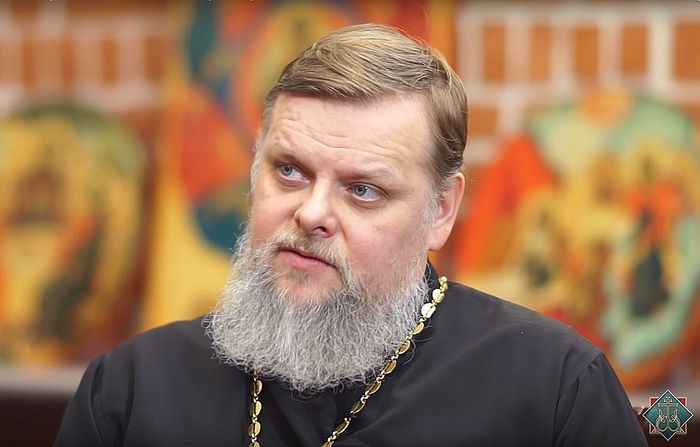
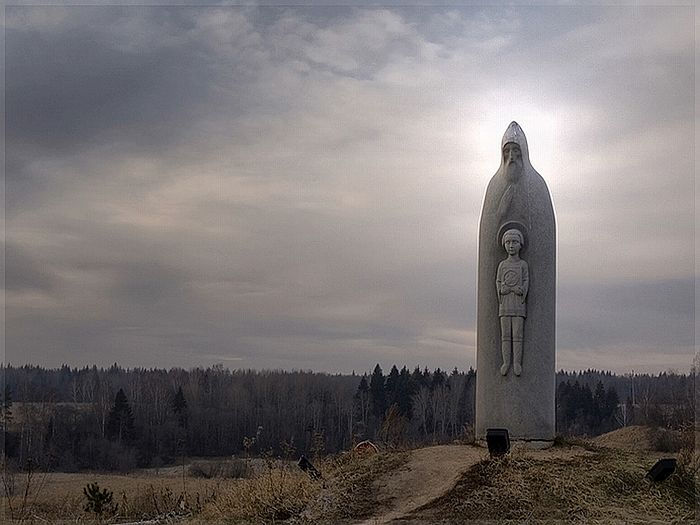
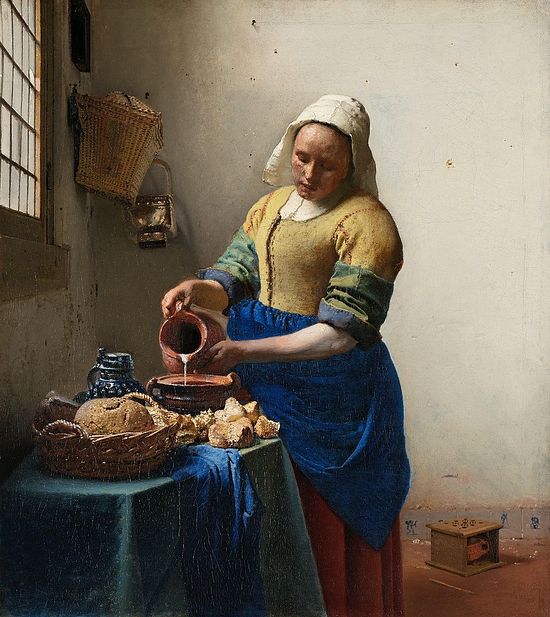
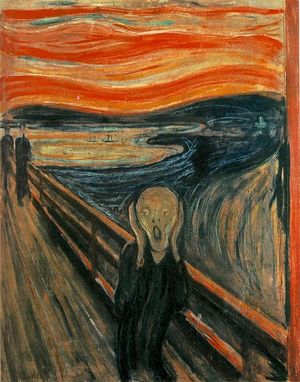


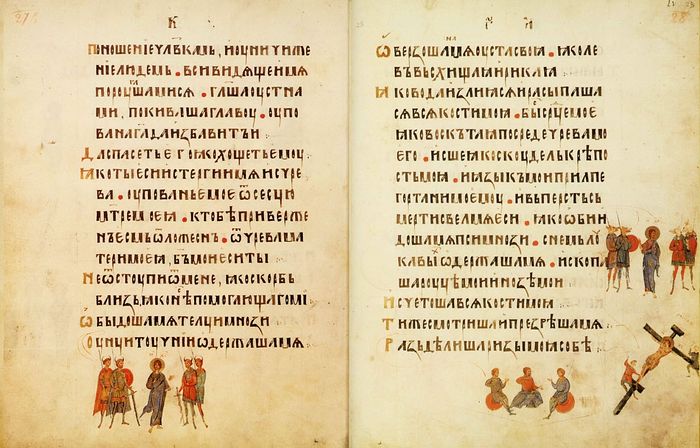

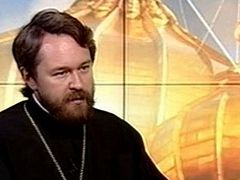
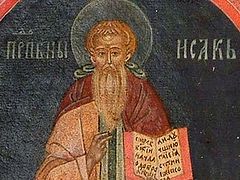

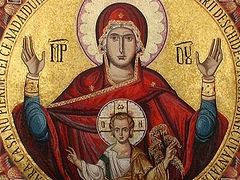
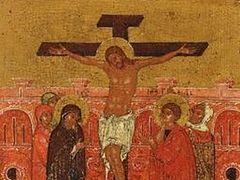
As an American artist and member of The Church of Jesus Christ of Latter-Day Saints (Mormons), I agree with the ideas expressed here whole-heartedly. In my own experience, I can bear witness to the truths shared here. Before my conversion to Christianity, my art was “spiritual” but ultimately mired in intellectualism and abstraction. Since my conversion, my heart’s desire is to uplift all people to Christ and His love. Through God’s grace, people are resonating with my work and finding their hearts moved towards Him. I am humbled to be an instrument in His hands.
God’s blessings be upon all artists who seek to lead souls to Christ.
Thank you for your help in clarifying our vision with content such as this. Blessings to you and your ministry.
More articles in this line, please and in particular on modern literature.
However, after becoming Orthodox I had a distinct sense of being drawn to carve deep relief icons. I was inspired by the Russian bronze icons and Byzantine ivories as well.
Interesting to me was that when I was in highschool I was an inveterate doodler, and most of my doodlings were of faces, and they were strikingly iconic. To me it was in retrospect and intimation of my eventual conversion to Orthodoxy and the awakening of my art in carving of Orthodox iconography.
I also had an opportunity to carve an icon-like portrait of St. Thomas More, who was beheaded by English King Henry the VIII, and presented it to Justice Scalia when he visited our remote town. On the back were the last words of St. Thomas "I am the King's good servant, but God's first." This was given to Justice Scalia about nine months before his untimely and suspicious demise... Lord have mercy; Memory eternal.